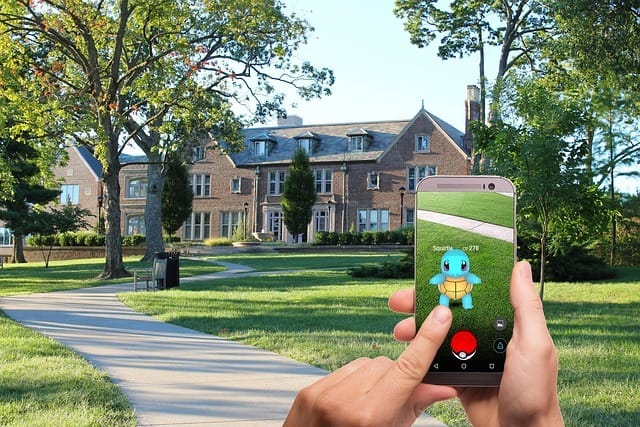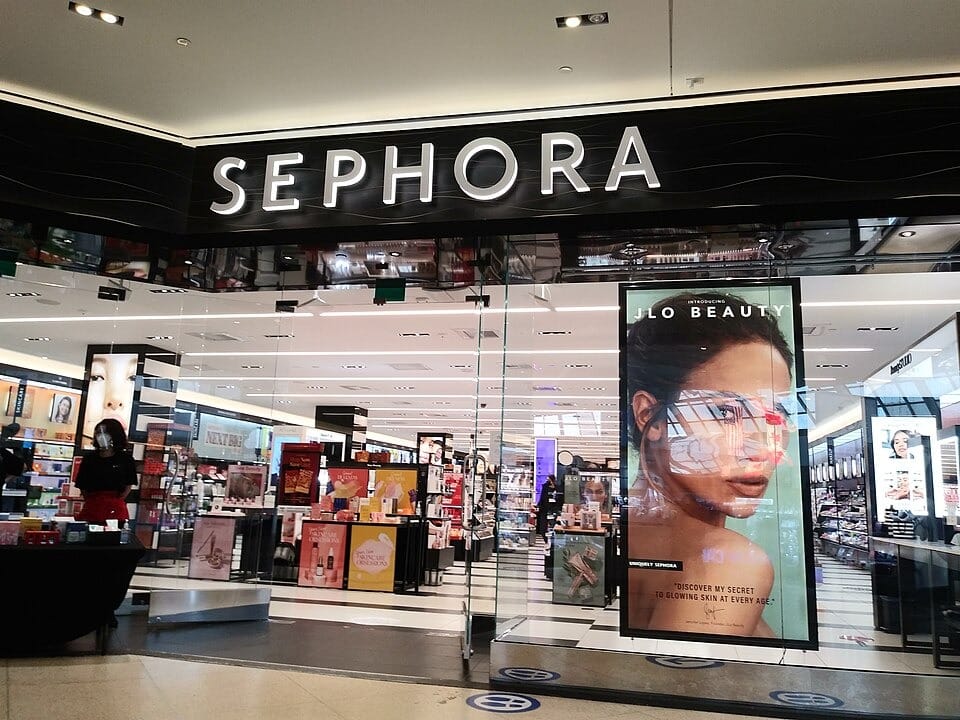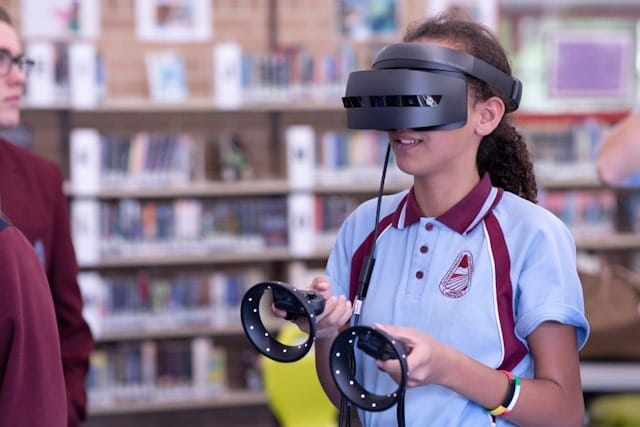Augmented Reality Examples: How AR Is Transforming Every Industry
Augmented Reality (AR) is reshaping how you perceive and interact with the world. It layers digital content, including images, animations, and data, onto your physical environment in real time. This blend of virtual and real enables a richer immersive experience in both consumer and enterprise settings.
In this article, you will learn why Augmented Reality matters today and explore some compelling Augmented Reality examples across industries.
Why Augmented Reality Matters?
As digital experiences rapidly evolve, the way one interacts with products, brands, and environments is changing fast. Augmented Reality bridges the physical and virtual worlds, offering real-time, immersive engagement that static visuals simply can't match.
According to a recent report, AR engagement increased nearly 20% since early 2020. Conversion rates for consumers interacting with this technology are up to 90% higher than for those who don't.
Here's why Augmented Reality matters today for every business:
Evolving Consumer Habits: Modern consumers expect personalization, instant information, and interactive engagement.
Business Adoption: Brands are integrating AR to streamline training, design, and marketing workflows.
Immersive Retail Engagement: Retailers use AR to help one visualize products before buying, improving confidence and reducing returns.
Cross-Industry Value: From healthcare to education, AR enhances precision, safety, and understanding.
Popular Augmented Reality Examples
Here are some iconic and influential Augmented Reality examples you may already know or should see:
Pokémon GO – Leading Location-Based AR Game

Pokémon GO is one of the best-known Augmented Reality examples in gaming & entertainment. You use your smartphone's GPS and camera to locate, capture, and interact with virtual creatures superimposed on streets, parks, and public places. It shaped how location-based AR can drive real-world exploration and social interaction.
IKEA Place AR App – Visualize Furniture in Your Home

IKEA Place is a powerful example of Augmented Reality in retail & e-commerce. The app lets you virtually place furniture in your home using your device camera, with over 2,000 true-to-scale 3D IKEA products. It even renders textures, light, and shadows realistically, so you can see how items will actually fit and look.
This AR experience substantially reduces uncertainty in furniture shopping. By letting you preview sofas, chairs, tables, or storage units in your own room before buying, IKEA Place helps you make more confident decisions and avoid costly returns.
Sephora Virtual Artist AR – Virtual Try-On for Cosmetics

Sephora's Virtual Artist is an AR-powered feature that allows customers to try on makeup products virtually using their smartphone cameras. This tool enables users to experiment with different shades and styles in real-time, providing a personalized shopping experience without the need to visit a store.
The app increases customer confidence and engagement by reducing guesswork in cosmetics shopping. Instead of buying multiple shades or returning items that don't match, customers can preview the effect virtually, which can boost conversions and loyalty.
Pepsi Max AR Bus Shelter – Interactive Marketing Campaign

Pepsi Max's AR Bus Shelter campaign transformed an ordinary bus stop into an interactive experience by using AR technology to display surreal and unexpected scenes, such as alien invasions and robot attacks, in the real world. This innovative marketing strategy captivated commuters and generated widespread attention.
Coca-Cola AR Vending Machine – Gesture-Controlled Experience

Coca-Cola integrated AR into vending machines, enabling customers to interact with virtual characters using gestures. This innovative experience made routine interactions playful and engaging. The Coca-Cola AR campaign enhanced customer engagement and brand interaction. The gesture-controlled AR features not only provide entertainment but also demonstrate the potential of AR in transforming traditional consumer touchpoints into immersive experiences.
Snapchat AR Filters – Personalization and Advertising

Snapchat's AR lenses allow users to apply digital effects to their selfies, blending entertainment with marketing opportunities. Brands use these filters for product launches and interactive campaigns.
These filters show how AR can merge personalization, social sharing, and advertising effectively. They're sophisticated marketing tools that drive engagement and brand awareness, particularly among younger audiences.
Google Lens – Real-Time Object Identification

Google Lens uses your camera to identify objects, translate texts, and gather information. Point your smartphone at a landmark, plant, or product, and the application will overlay relevant data. This shows how AR extends beyond entertainment, enhancing everyday problem-solving and learning.
Augmented Reality Examples Across Industries
Augmented Reality is revolutionizing multiple industries simultaneously. From healthcare to tourism, each sector is finding unique ways to integrate AR for improved engagement, efficiency, and decision-making.
Augmented Reality in Retail & E-Commerce
Virtual Try-on: In retail, AR enables you to visualize products (such as furniture, apparel, and decor) in your environment. Virtual try-ons let you preview clothing and accessories. Brands like Nike, Gucci, and Warby Parker allow you to "try before you buy."
In-store Experiences: AR also enables interactive catalogs and in-store navigation overlays. Some stores use AR mirrors: you stand, and digital outfits appear on your reflection. These tools reduce return rates and improve engagement.
Augmented Reality in Healthcare
Augmented Reality in healthcare enhances how you learn, diagnose, and treat by blending digital visuals with real-world medical settings. Here's how AR is transforming healthcare:
Surgical Assistance & Navigation: Surgeons use AR to overlay anatomical data, tumor margins, or instrument pathways onto patients during operations.
Medical Training & Education: Learners interact with virtual organs and anatomy visualizations via AR headsets for safe, hands-on learning.
Diagnostics & Imaging Overlay: AR can project MRI, CT, or X-ray scans onto the patient's body for better alignment during procedures.
Telemedicine & Remote Guidance: In remote surgeries or consultations, AR enables remote surgeons to annotate what the local operator sees.
Augmented Reality in Education

Instead of relying solely on static textbooks and 2D visuals, Augmented Reality in education brings lessons to life through interactive 3D models and immersive experiences. Students can:
Explore 3D models of molecules, historical artifacts, or architectural structures.
Walk through historical reconstructions in their environment.
Use apps like EarthAR, Sketchfab, or Anatomy-AR to study complex systems in place.
According to a report, AR in education increases student engagement and motivation by over 80% and supports differentiated learning styles. This technology empowers you to explore, manipulate, and understand complex subjects at your own pace.
Augmented Reality in Real Estate
Instead of relying on static floor plans or traditional tours, Augmented Reality in real estate lets you explore properties interactively and make faster, more confident decisions. Buyers can visualize spaces, customize layouts, and experience properties before construction is complete.
Virtual Property Tours: AR lets you walk through homes remotely, exploring layouts and spaces before visiting in person.
Interactive Visualization: You can place furniture, change finishes, and see design variations instantly.
Faster Decisions: By previewing properties with AR, you gain confidence, helping agents close deals more quickly.
Augmented Reality in Gaming & Entertainment
Gaming is perhaps the most recognized AR domain. Beyond Pokémon GO, here's how AR is used in the entertainment industry:
Ingress (by Niantic) uses location-based AR gameplay.
AR versions of escape rooms, puzzle hunts, and interactive public art installations.
Live concerts with AR visual effects, immersive shows overlay digital content onto stages or venues.
Entertainment venues use AR to augment exhibits, converting your mobile devices into a portal to hidden layers of storytelling.
Augmented Reality in Industry & Manufacturing Applications
In factories and workshops, AR supports:
Maintenance & Repair: Technicians see overlay instructions, part identifiers, and real-time guidance while working.
Assembly Assistance: AR projects step-by-step instructions onto components in your field of view.
Quality Inspection: Overlay expected dimensions, tolerance margins, or deviations onto physical parts.
Remote Expert Support: On-site operators connect with remote experts who see precisely what they see and annotate live.
These applications reduce downtime, errors, and training costs.
Augmented Reality in Tourism & Cultural Heritage
AR enriches travel by overlaying historical information, stories, and guided tours onto real-world landmarks.
Immersive Exploration: Tourists can view 3D reconstructions of ancient sites through their smartphones.
Enhanced Engagement: Museums use AR to animate artifacts, making history interactive.
Cultural Preservation: Digital overlays help share heritage stories without altering physical sites.
Future of Augmented Reality and Flam's Role
AR is entering a new era of mainstream adoption, driven by rapid technological advancements and expanding industry applications. And FLam ts at the forefront driving this change.
Rising AR Adoption: 2025 and Beyond
The next few years will see AR move from novelty to necessity. With AI integration, faster networks, and widespread use of smart devices, industries are embedding AR into everyday operations. By 2027, a majority of enterprises are expected to use immersive technologies to enhance customer engagement, training, and productivity.
Flam: Powering Scalable, Interactive AR Experiences
Flam enables brands and enterprises to deliver high-impact AR campaigns at scale. Its robust platform allows for seamless creation, deployment, and measurement of immersive experiences, helping businesses engage audiences more effectively. By combining interactivity with scalability, Flam is positioned as a key enabler of the next generation of AR-powered marketing and communication.
Final Thoughts
Augmented Reality is a transformative force reshaping how you shop, learn, work, and experience the world. From immersive retail try-ons to life-saving medical applications, these Augmented Reality examples highlight its growing impact across industries.
As adoption accelerates, businesses that embrace AR early will build stronger connections, reduce friction, and stand out in competitive markets.
Bring your brand stories to life through immersive advertising with Flam to captivate your audience and deliver measurable impact.